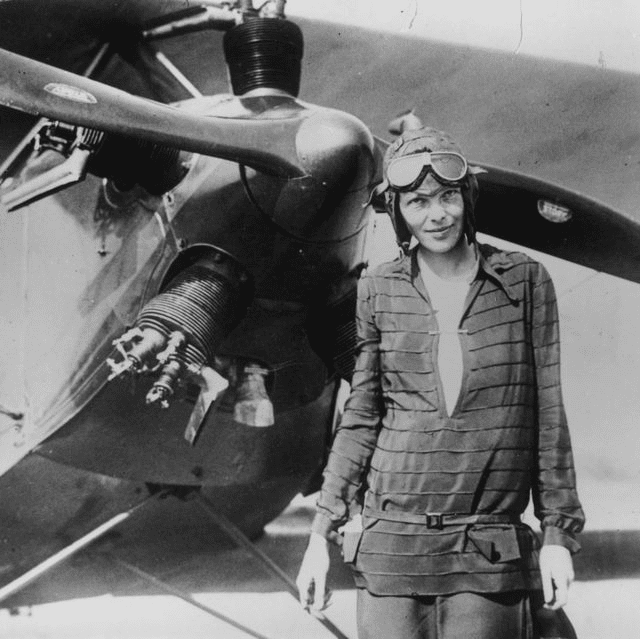
The Enigmatic Life of Amelia Earhart: Aviation Pioneer and Cultural Icon
Amelia Earhart, a name that resounds with both intrigue and inspiration, remains an enduring figure in the annals of aviation history. Her early life laid the groundwork for her groundbreaking achievements, and her mysterious disappearance continues to provoke speculation and fascination. In this article, we will explore Amelia Earhart’s early life, her remarkable accomplishments as an aviator, the circumstances surrounding her death, and the controversies that have emerged in the years since.
Early Life: The Foundations of a Trailblazer
Born on July 24, 1897, in Atchison, Kansas, Amelia Mary Earhart was the second daughter of Edwin and Amy Earhart. Growing up in a family that valued independence, Amelia’s upbringing fostered her adventurous spirit from a young age. Her father, a lawyer, faced various career challenges, which led to frequent relocations. This transient lifestyle exposed Amelia to numerous educational environments, thus shaping her resilient character.
During her teenage years, Amelia developed an interest in aviation after attending a flying exhibition in 1920. Captivated by the planes soaring above her, she declared her intention to fly. Her determination led her to take her first flight lesson in 1921, where she was instructed by Neta Snook, one of the few female pilots at the time. Earhart’s tenacity was evident; despite societal norms that discouraged women from pursuing careers in aviation, she was undeterred. She earned her pilot’s license in 1923, becoming just the 16th woman in the United States to achieve this feat.
Accomplishments: Breaking Barriers
Amelia Earhart’s contributions to aviation were monumental. She gained national attention in 1927 when she became the first woman to fly solo across the Atlantic Ocean. The flight took place on May 20-21, and it lasted around 15 hours, landing in Ireland. This achievement not only solidified her status as an aviator but also showcased women’s potential in fields dominated by men. Following this landmark flight, she received numerous accolades, including the Distinguished Flying Cross, awarded by Congress—the first woman ever to receive the honor.
Earhart didn’t stop there; she continued to push the boundaries of aviation. In 1932, she became the first person to fly solo nonstop from New York to Paris, a journey that lasted about 14 hours. Her daring spirit encouraged other women to pursue aviation careers, fundamentally altering perceptions of women’s abilities. Throughout her life, she actively campaigned for women’s rights and equality, using her platform to advocate for female empowerment in traditionally male-dominated spheres.
Beyond her flying feats, Earhart wrote several books, including “20 Hrs., 40 Min.” and “The Fun of It,” where she shared her adventures and insights about aviation. She was also a co-founder of the Ninety-Nines, an organization for female pilots that still exists today, demonstrating her commitment to fostering a community for aspiring aviators.
Death: The Vanishing Act
Amelia Earhart’s life took a tragic turn during her final flight in July 1937. She and her navigator, Fred Noonan, embarked on an ambitious round-the-world journey. On July 2, while approaching Howland Island, their destination in the central Pacific Ocean, they lost radio contact with the Coast Guard. Despite extensive search efforts by the U.S. Navy and Coast Guard, no trace of Earhart, Noonan, or their plane was ever found.
The lack of conclusive evidence surrounding the disappearance sparked a myriad of theories. Some speculate that Earhart and Noonan may have crash-landed on an uninhabited island, while others suggest they could have been captured by Japanese forces, given the geopolitical tensions of the time. This ambiguity has positioned Earhart’s disappearance as one of the great mysteries of the 20th century.
Controversy: Theories and Speculations
The intrigue surrounding Amelia Earhart extends far beyond her pioneering flights; it enters the realm of controversy fueled by speculation and rumor. Over the years, countless theories have emerged regarding her fate. Some believe she did survive the crash and lived under a different identity. One of the more popular, yet unproven, theories posits that Earhart was seen living on Saipan, a Japanese-controlled island, where she engaged in covert espionage against Japan during World War II.
Another theory suggests that she made it to Gardner Island (now Nikumaroro) and perished there. In recent years, expeditions to this remote island have unearthed artifacts that some speculate might belong to Earhart, rekindling interest in her disappearance. Despite these numerous attempts to resolve the mystery, definitive proof remains elusive.
The controversies surrounding her death have not only ignited debates among historians and aviation enthusiasts but have also overshadowed her legacy as a trailblazer. Instead of solely focusing on her incredible accomplishments, the ongoing discourse often perpetuates the narrative of her mysterious fate.
Conclusion: A Lasting Legacy
Amelia Earhart’s life is a compelling narrative filled with remarkable accomplishments, vibrant personality, and an enduring mystique. From her courageous flights that broke barriers to the controversies surrounding her disappearance, she continues to spark fascination and admiration. Earhart’s legacy transcends the realm of aviation; she symbolizes the relentless pursuit of dreams, the fight for gender equality, and the courage to defy societal expectations.
Today, as we commemorate her achievements, we also recognize the impact she had on future generations of women in aviation and beyond. The continued exploration of her life and untimely disappearance serves as a reminder that while some mysteries may remain unsolved, the spirit of pioneering can inspire us to chase our aspirations, no matter how lofty they may seem. Amelia Earhart is not merely an icon of aviation; she epitomizes the audacity to dream big and to venture into the unknown.















